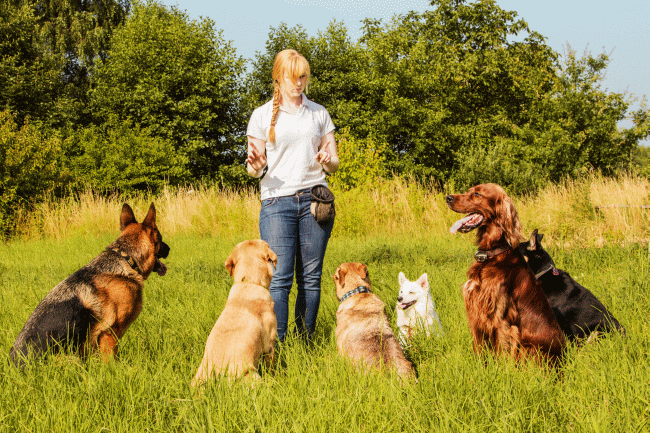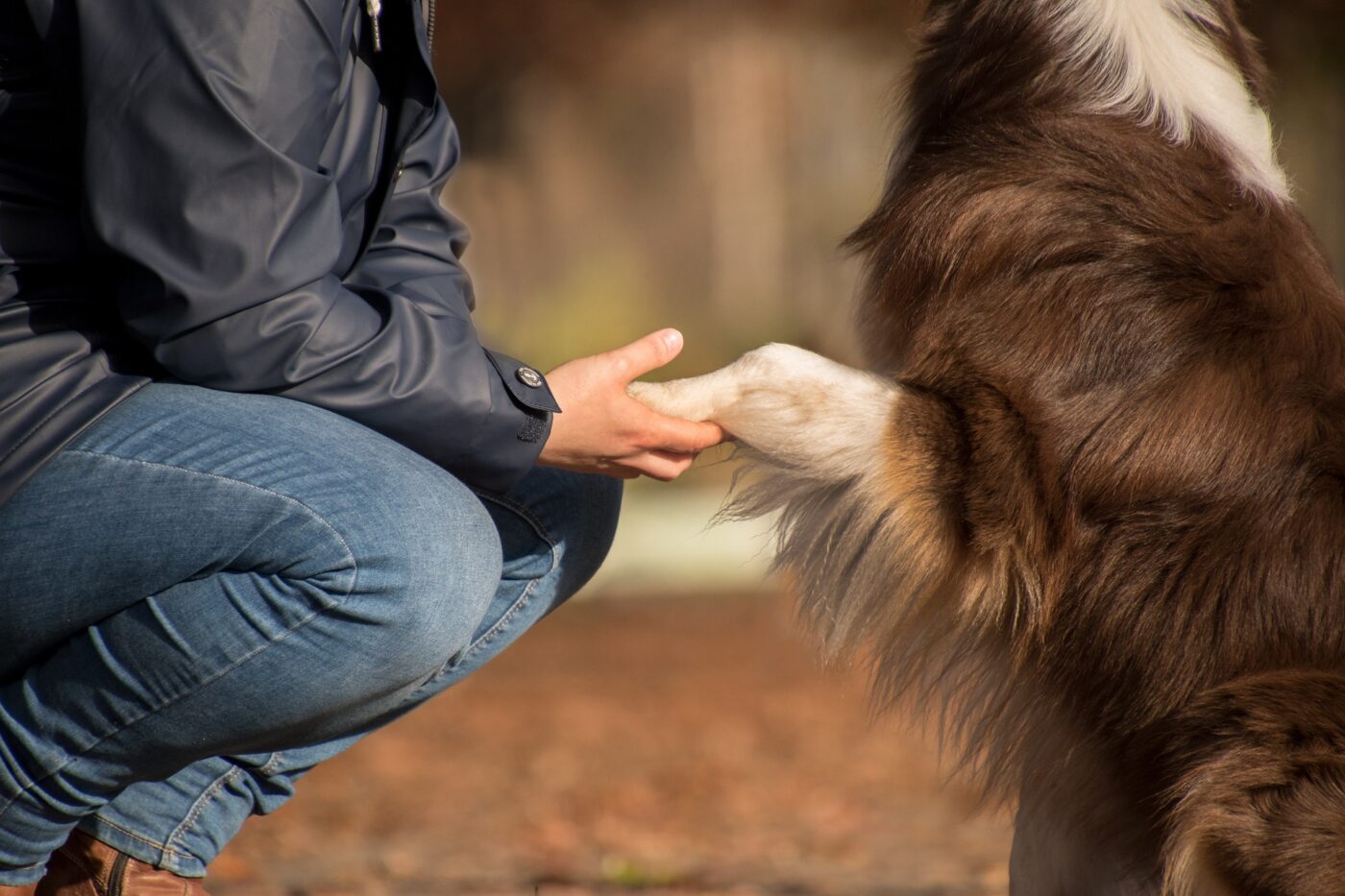Get Results with Puppy Training That Sets the Foundation for a Well-Behaved Dog
Get Results with Puppy Training That Sets the Foundation for a Well-Behaved Dog
Blog Article
Transform Your Pet's Behavior With Proven Training Methods
Transforming your canine's behavior calls for a nuanced understanding of their private qualities and needs, as well as the application of tried and tested training methods. Uniformity in your training technique not just improves obedience yet likewise fosters a deeper bond of trust and regard in between you and your animal.

Understanding Canine Habits
Comprehending canine actions is important for reliable training and communication between people and their canine friends. Canines, as social pets, show a variety of behaviors influenced by genetics, environment, and experiences. Recognizing these actions aids owners tailor their training approaches to meet the particular demands of their pets.
Key facets of canine habits consist of body language, vocalizations, and social communications. In addition, socialization plays a crucial role in forming actions; canines that connect favorably with other animals and different people are generally much more versatile and well-adjusted.
Moreover, acknowledging anxiety signals-- such as panting, avoidance, or pacing behaviors-- can stop escalation right into extra major issues. Owners who are in harmony with their pet dog's habits can create a risk-free and caring environment, cultivating depend on and enhancing the training procedure. Inevitably, a deep understanding of canine actions lays the foundation for a harmonious relationship and effective training outcomes, making sure both canines and their owners flourish together.
Favorable Reinforcement Strategies
Favorable support techniques are widely acknowledged as one of the most reliable techniques for training dogs, cultivating a favorable knowing setting. This strategy involves gratifying desired actions with treats, appreciation, or play, thus encouraging the canine to repeat those habits (Dog training). Unlike vindictive approaches, positive reinforcement develops trust fund and reinforces the bond between the canine and the trainer
To implement favorable reinforcement successfully, timing is vital. Benefits need to be provided immediately following the preferred actions to help the dog make the connection. Consistency is also important; making use of the exact same commands and rewards aids the canine recognize what is expected. Additionally, varying the rewards can keep the dog engaged. For instance, rotating between deals with, toys, and spoken praise can preserve rate of interest and motivation.
It is very important to note that favorable reinforcement is not regarding bribery; rather, it has to do with enhancing good behavior. With time, as the pet dog finds out to associate particular activities with positive outcomes, the regularity of benefits can be progressively decreased, transitioning to spoken praise or recurring incentives. This approach not only encourages obedience yet also promotes a pleased and positive pet dog, making training an extra delightful experience for both events included.
Attending To Common Issues
Resolving common issues during canine training is crucial for making certain a effective and harmonious partnership between the canine and its proprietor. Lots of pet dog proprietors come across behavior obstacles, such as extreme barking, jumping, and leash drawing. Recognizing the source of these actions is important for reliable training.
To alleviate this, supply sufficient physical workout, psychological excitement, and possibilities for social interaction with both humans and other canines. Educating the pet dog to rest upon greeting can redirect this actions positively.
Chain pulling is another widespread issue, often resulting from a pet dog's enthusiasm to explore. Utilizing correct leash taking care of methods, combined with training procedures that urge loose-leash walking, can significantly boost this actions.
Additionally, problems like resource securing or separation stress and anxiety need customized approaches. Gradual desensitization and counter-conditioning can be reliable in addressing these challenges. websites By identifying and proactively taking care of these usual issues, canine owners can foster an extra satisfying training experience and enhance the bond with their canine buddies.
Uniformity in Training
Uniformity is a foundation of efficient canine training, as it establishes a clear framework for the pet to understand habits and assumptions. When incentives, cues, and commands are applied consistently, pets can quicker grasp what is needed of them. Irregular training can cause complication, leading to undesirable behaviors that irritate both the instructor and the pet.
To achieve uniformity, it is important that all members of the household follow the exact same training methods. Making use of the very same verbal signs and hand signals ensures that the dog obtains consistent messages. In addition, the timing of improvements and rewards ought to be regular; instant support increases the probability that the dog will link the habits with the end result.
In addition, establishing a routine can further enhance uniformity. Normal practice sessions, coupled with structured schedules for feeding, walking, and play, help dogs expect and recognize their atmosphere, making them much more responsive to training. Inevitably, uniformity fosters a complacency and depend on, empowering go to this website pet dogs to read more properly. By committing to an organized strategy, instructors can advertise favorable actions changes and grow a courteous buddy.
Structure a Solid Bond
Exactly how can fostering a strong bond between a pet and its proprietor improve the training experience? A strong partnership developed on count on and respect functions as the foundation for effective training. When a pet feels safe in its connection with its owner, it is most likely to exhibit positive habits and be responsive to finding out. This bond motivates the dog to engage totally in training sessions, as it sees the proprietor as a source of guidance and support.

In addition, a well-established link can decrease stress and anxiety and behavioral issues, as pet dogs are less likely to act out when they really feel understood and looked after. For that reason, prioritizing the growth of a strong bond not just improves the training experience but also contributes to a better and a lot more well-adjusted dog. Ultimately, the journey of training transforms right into a collective collaboration, leading to lasting behavioral enhancements.
Verdict

Proprietors who are attuned to their pet dog's habits can create a caring and secure atmosphere, promoting count on and enhancing the training procedure. Ultimately, a deep understanding of canine habits lays the foundation for an unified relationship and reliable training results, guaranteeing both pets and their owners flourish with each other.
Attending to usual problems throughout pet training is essential for making sure a unified and successful connection between the canine and its owner (Dog training).Uniformity is a foundation of reliable dog training, as it develops a clear structure for the pet to comprehend expectations and actions.In final thought, changing a pet's behavior via shown training methods needs an understanding of canine behavior, the application of positive reinforcement methods, and a focus on consistency
Report this page